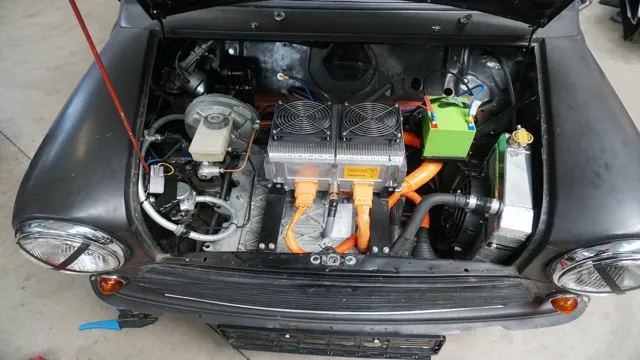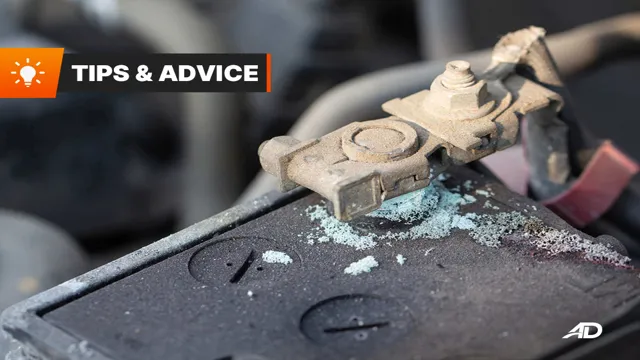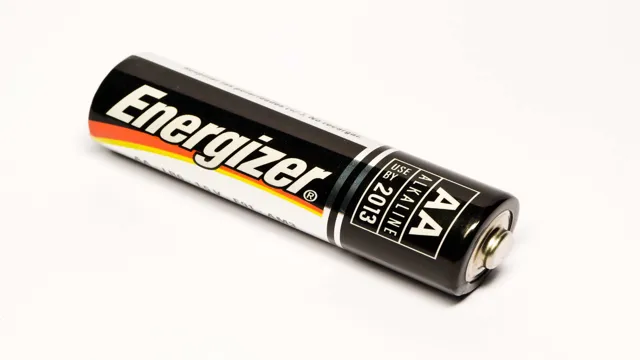Revamp Your Ride: The Ultimate Guide to DIY Electric Car Conversion with Leaf Battery Box
If you’re looking to convert your gas-guzzler into an eco-friendly machine, a DIY electric car conversion might just be the project you’re looking for. And one of the most crucial components in making the switch is building a battery box. In this blog post, we’ll be focusing specifically on building a Leaf battery box, which is a highly popular choice among DIY electric car converters.
Not only is it cost-effective, but it also allows you to reuse batteries from a Nissan Leaf – a practical and sustainable option. As we take you through the steps of building a Leaf battery box, we’ll provide you with some useful tips and tricks, so you can embark on your own electric car conversion journey with confidence and excitement. So, get your tools ready and let’s dive in!
Choosing a Leaf Battery for your EV Conversion
If you’re planning to convert your gas-guzzling ride into an eco-friendly electric car, one important component you’ll need to consider is the battery. The lithium-ion battery used in Nissan Leaf EV is a popular choice among DIY electric car enthusiasts due to its high energy density and long cycle life. But before you go ahead and purchase a Leaf battery, there are a few things to keep in mind.
First, think about your vehicle’s power requirements and calculate how many Leaf battery cells you’ll need to meet them. Next, consider whether you want a new or used battery, as this can affect the cost. Additionally, you’ll need to build or buy a battery box that fits the Leaf battery and provides adequate ventilation and cooling.
With the right approach and planning, a Nissan Leaf battery can provide a cost-effective and reliable solution for your EV conversion project.
Comparing Leaf Battery Cells with Other Electric Car Batteries
If you’re considering converting your car to electric, you may be wondering which type of battery to use. Leaf battery cells are a popular choice due to their affordability and reliability. When compared to other electric car batteries, Leaf battery cells are known for their longevity and ability to hold a charge.
Additionally, they have a lower risk of thermal runaway, which is a safety concern with other types of batteries. Leaf battery cells also offer a good balance of power and energy density, allowing for a longer range while still being compact and easy to install. Overall, a Leaf battery can be a great choice for your EV conversion, providing a reliable and efficient power source that won’t break the bank.

How to Source and Buy a Used Leaf Battery Cheaply
If you’re considering converting your gasoline vehicle into an electric one, sourcing a used Nissan Leaf battery can be a great option. But where can you find a cheap and reliable battery? First, you’ll want to determine the size of battery your conversion requires. Used Leaf batteries are available in 24, 30, and 40 kWh.
Once you know what size you need, start browsing online marketplaces like eBay or Craigslist. Make sure to thoroughly research the seller and ask for detailed information about the battery’s usage and condition before making a purchase. You could also consider reaching out to local salvage yards or auto shops to see if they have any used Leaf batteries available.
Keep in mind that you may need to pay for shipping or transport, and always factor in the cost of a battery management system (BMS) and other necessary components. By doing your research and comparing options, you can find a Leaf battery that fits your conversion needs and budget.
Designing and Building the Battery Box
Designing and building the battery box for your DIY electric car conversion can be an exciting and challenging task. One popular choice among EV enthusiasts is using the battery pack from a Nissan Leaf, due to its reliability and affordability. The battery box must be designed to accommodate the size and shape of the Leaf battery pack, with proper ventilation and cooling systems to prevent overheating.
In addition, the box must be securely mounted to the car’s chassis to ensure safe operation. Many DIY EV converters opt to design and build their own battery boxes, as it allows for greater customization and flexibility. However, it is important to carefully research and plan the design to ensure proper fit and safety measures are in place.
Overall, creating the battery box is a crucial step in any DIY electric car project, and careful attention to detail can lead to a successful and rewarding final product.
Planning Your Battery Box Size and Placement
When it comes to designing and building a battery box, one of the most important considerations is the size and placement of the box. You want to ensure that the box is large enough to accommodate all of your batteries, as well as any other components you may need to include, such as a battery monitor or charging controller. Additionally, you’ll want to think carefully about where you’ll be placing the box, as this can have a significant impact on your overall system performance.
For example, if your battery box will be located in a hot area, you may need to consider additional ventilation or cooling options to prevent overheating. Similarly, if the box will be located in a space with restricted access, you’ll need to design it in such a way that it can be easily maintained and serviced. By taking the time to carefully plan your battery box, you can ensure that your system operates efficiently and effectively for years to come.
Choosing the Right Materials for Your Battery Box
When designing and building a battery box, it’s essential to choose the right materials to ensure the safety and longevity of your batteries. The main keyword, “battery box,” is an important component of any energy storage system. The materials you choose should be non-conductive and non-corrosive, as well as fire-resilient.
Some commonly used materials include plastic, metal, and wood. However, it’s crucial to consider the type of battery you’re using and its safety requirements before selecting a material. For example, lithium-ion batteries require specific precautions due to their volatile nature.
Overall, the key is to choose a material that provides adequate protection and ventilation while also being durable and cost-effective.
Building the Battery Box with Easy-to-Find Tools and Materials
If you’re looking to build a battery box, there are plenty of tools and materials available that are easy to find. The first step is to determine the size of the box you’ll need. You’ll want to consider the size of your battery as well as any additional components like a charge controller or inverter.
Once you’ve determined the size, you can start to collect your materials. A sturdy plastic container or an ammo crate can work well for the box itself. You’ll also need a drill, screws, and a saw to cut any necessary holes in the container.
For added safety, consider using a battery enclosure to protect any exposed terminals. Remember that safety should always be a top priority when working with electricity! With just a few tools and materials, you can design and build a battery box that will keep your battery safe and secure.
Wiring and Installing the Leaf Battery Box
If you’re considering a DIY electric car conversion, you may be curious about how to wire and install the Leaf battery box. This process can be a bit daunting for beginners, but with some basic knowledge and the right tools, it’s definitely doable. The Leaf battery box is a popular choice for EV conversions due to its high capacity and compact size.
To wire and install the battery box, you’ll need to start by carefully following the manufacturer’s instructions for your specific model. This will typically involve mounting the box securely in your vehicle, running cables to your motor and charger, and connecting them to the battery terminals. It’s important to take your time and double-check your connections to ensure a safe and reliable system.
With a little patience and attention to detail, you can successfully integrate a Leaf battery box into your DIY EV conversion project and enjoy the benefits of clean, green driving.
Wiring the Leaf Battery to Your Electric Car Conversion
If you’re planning to convert your car to electric power, using a Leaf battery box can save you the hassle of assembling individual lithium-ion cells. However, wiring and installing the Leaf battery box requires some expertise. Firstly, ensure that the battery management system (BMS) is properly integrated with the motor controller.
This allows you to monitor and regulate the battery’s voltage, current, and temperature. Then, wire the battery pack in a manner that suits your motor controller. For instance, if your controller requires a high voltage, connect the cells in a series configuration.
If the controller needs high amperage, wire the cells in parallel. Lastly, keep the Leaf battery box away from water and heat sources. Also, make sure the battery box is securely fastened to prevent any vibrations during driving, which could damage the cells.
With proper wiring and installation, the Leaf battery box can provide you with a reliable power source that can last for years.
Installing the Leaf Battery Box Safely and Securely
Installing the Leaf Battery Box Wiring and Installation – Guide If you are considering installing a Leaf battery box for your DIY energy storage project, it is crucial to do it safely and securely. To start the installation process, you need to first ensure that the Leaf battery box is mounted on a flat and stable surface. Next, you need to prepare the wiring harness to connect the battery box to the inverter.
Be sure to choose high-quality wires that can handle the current without heating up. You should also have some basic knowledge of electrical wiring to make the correct connections. Once the wiring is done, secure it properly, keeping it away from any sharp edges or objects that could damage it.
Finally, install the battery box according to the manufacturer’s guidelines, making sure all bolts and screws are tightened to the correct torque levels. By following these guidelines, you’ll be able to install the Leaf battery box safely and securely, ensuring maximum performance and longevity for your energy storage system.
Testing Your Leaf Battery Box and Enjoying Your DIY Electric Car
If you’re someone who enjoys a good DIY project, then converting a conventional car into an electric vehicle (EV) can be a great challenge. One key component that will help you achieve your goal is installing a Leaf battery box, which contains the battery cells and other necessary electrical components. However, before you hit the road with your newly converted EV, you want to make sure that your Leaf battery box is working correctly.
There are a few steps you can take to test your Leaf battery box and make sure that it is functioning as it should. First and foremost, check the voltage of the battery cells with a multimeter to ensure they are all balanced and charged. You can do this by measuring the voltage of each cell and making sure they are all around the same range.
Additionally, you should test the Leaf battery box with a load test to ensure that it can handle the power demands of your EV. Once you’re confident that your Leaf battery box is working properly, it’s time to hit the road and enjoy the fruits of your labor – a truly unique and personalized EV that is both fun to drive and environmentally friendly. So why not harness the creative potential that DIY electric car conversion offers, and experiment with incorporating a Leaf battery box into your project?
Conclusion
In conclusion, building a DIY electric car with a Leaf battery box for an EV conversion is a perfect example of thinking outside the box. It’s a clever and cost-effective way to help reduce emissions while also providing a fun and efficient ride. Not to mention, it gives you the satisfaction of knowing that you helped decrease your carbon footprint one mile at a time.
So the next time someone asks you, “Why did you choose to build a DIY electric car using a Leaf battery box?” You can simply reply, “Because I’m an innovative and environmentally conscious individual who knows how to make a witty and clever decision.”
FAQs
What is a DIY electric car conversion?
A DIY electric car conversion involves transforming a gas-powered vehicle into an electric vehicle by replacing the engine with an electric motor and battery, typically using kits or parts bought online.
What are the benefits of a DIY electric car conversion?
Benefits of a DIY electric car conversion include reduced emissions and dependence on fossil fuels, cost savings on fuel and maintenance, and the satisfaction of building and driving a unique vehicle.
What is a Leaf battery box in an EV conversion?
A Leaf battery box is a popular choice for EV conversions as it is a pre-made container that holds the necessary batteries for the electric motor. It is commonly used in DIY EV conversions due to its compact size and compatibility with many different types of vehicles.
How long does a DIY electric car conversion take to complete?
The time it takes to complete a DIY electric car conversion can vary widely depending on the complexity of the project and the experience level of the builder. Some conversions can be completed in a few weeks with help from a professional, while others may take several months or more for a beginner.



